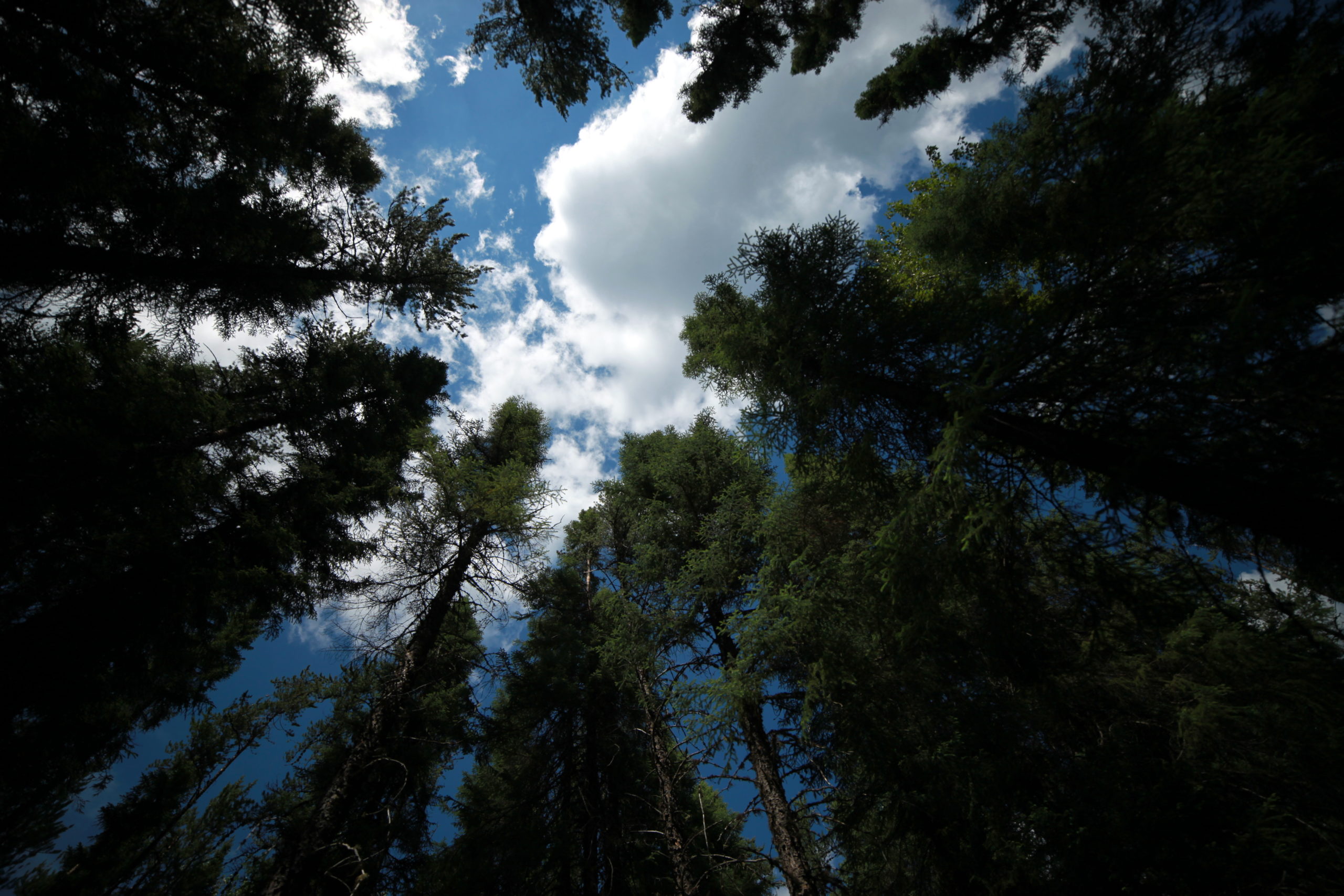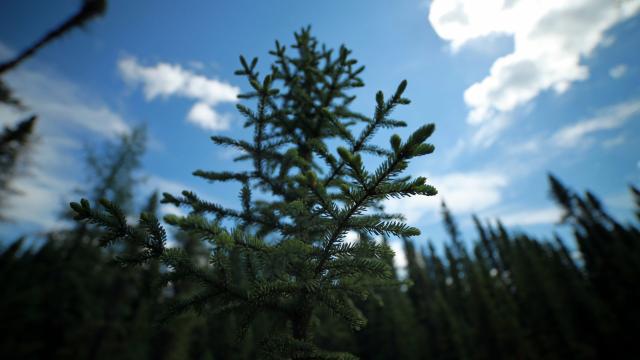Eastern Canada’s black spruce forests are one of the largest untamed wilderness areas on Earth. And in refreshingly optimistic news, parts of this ecosystem are expected to flourish in a warmer world, creating a refuge for species escaping drought-stricken regions to the south and west.
Black spruce. Image: Loïc D’Orangeville
That’s the conclusion of a sweeping new analysis of black spruce trees across 583,000 square km of forest in Canada’s Quebec province. The research, published today in Science, offers clues as to how this vast ecosystem will fare under human-caused climate change. While the boreal forest’s southern and western regions are likely to struggle with drought in a hotter future, parts of eastern Canada north of the 49th parallel could see a net benefit as the growing season lengthens.
“Climactically speaking, this looks like a system that can take what we think is going to happen in the next 20 or 30 years,” Harvard ecologist and study co-author Neil Pederson told Gizmodo. “It’s hope. It’s a bright spot.”
The boreal forests of North America and Eurasia are some of the most pristine wildlands on the planet. In addition to providing habitat for dozens of charismatic animals, from moose and caribou to foxes and migratory birds, they’re a massive carbon sink, locking away hundreds of billions of tonnes of organic matter in their soils. That means these forests are not only a sanctuary for biodiversity, but an important regulator of global climate.
We’d like our boreal ecosystems to remain intact, but you need only look at the most recent fire seasons in Canada and Alaska to get a sense of how threatened they are. Boreal forests are expected to see some of the largest temperature increases of the 21st century, which is likely to mean more warm, dry days and large, out-of-control fires — such as the megafire that devastated Fort McMurray early last month and continues to rage across hundreds of thousands of acres.
On the other hand, fairer weather might do some good for forests whose growth is limited by long, harsh winters. “Generally, the scientific community agrees that because boreal forests are constrained by low temperatures, they should see some benefits from global warming,” lead author Loïc D’Orangeville of the University of Quebec told Gizmodo. But there’s controversy in the details. “When you increase temperatures, trees require more water to grow,” he said. “If the water is not there to support that growth, the increase won’t happen.”
To figure out how black spruce trees — the dominant trees across North American boreal forests — will fare in a warmer, drier world, the researchers combined a decades-long dataset of tree ring cores built by Quebec’s forestry department with climate data from weather stations going back to 1960. “You can match each ring that each tree has created with its rate of growth, and then learn how the trees reacted to climate,” D’Orangeville explained.
Doing this for some 26,000 black spruce trees, the researchers uncovered a striking pattern. South of the 49th parallel, when it’s warm and dry, tree growth declines and forests start to exhibit signs of drought stress. “As you move northward, the response shifts,” D’Orangeville said. “The same weather in the north, the trees are going to enjoy.”

Image: Loïc D’Orangeville
In the north, where winters are exceptionally brutal, a slightly earlier spring and longer summer affords the forest more opportunity for growth. What’s more, this region accumulates so much snowpack in the winter that it doesn’t seem to become water-limited. “It’s sort of a balance between what is the strongest constraint,” said D’Orangeville. “Is it the lower water availability in late summer, or is it going to be related to the longer growing season.”
Nobody can predict exactly how things will look a century from now, but the future looks bright in this one untamed spot of our planet. Even under the most pessimistic carbon emissions scenarios, the study predicts that a boreal forest refuge area will remain intact. The treeline may even expand northward, something that ecologists are already witnessing in different parts of the world.
During his career, Pederson has travelled to see the northernmost trees on the planet, the Dahurian larches that stand just south of the Arctic Ocean on eastern Siberia’s Taymyr Peninsula. “To experience the vastness of these ecosystems, and just how wild they are, is so different from anything we can understand living in the United States,” he said. “These aren’t places that most of us want to go for vacation, but they are very important systems for wildlife and biodiversity.”
“Some bad things can and are happening to our ecosystems,” he continued. “But this dataset is showing us an area that might be dynamically OK. The trees are telling us that it might not be so bad.”
